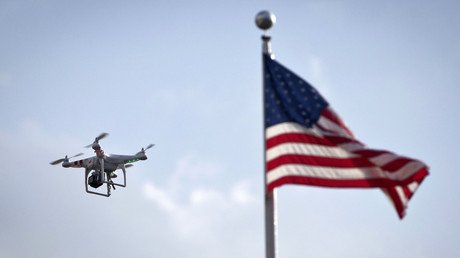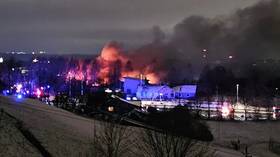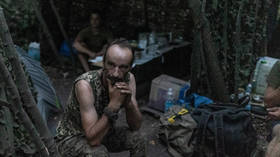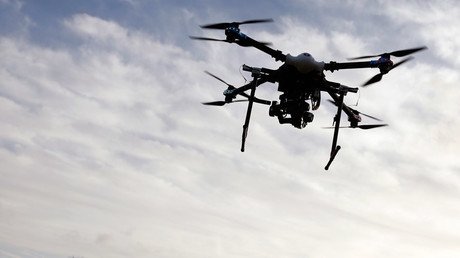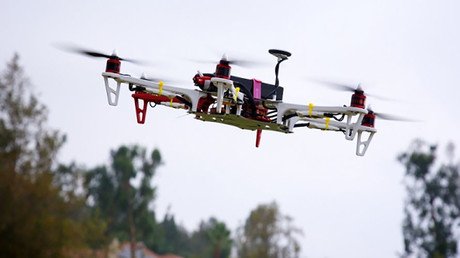Small, commercial drones allowed to fly under new FAA guidelines
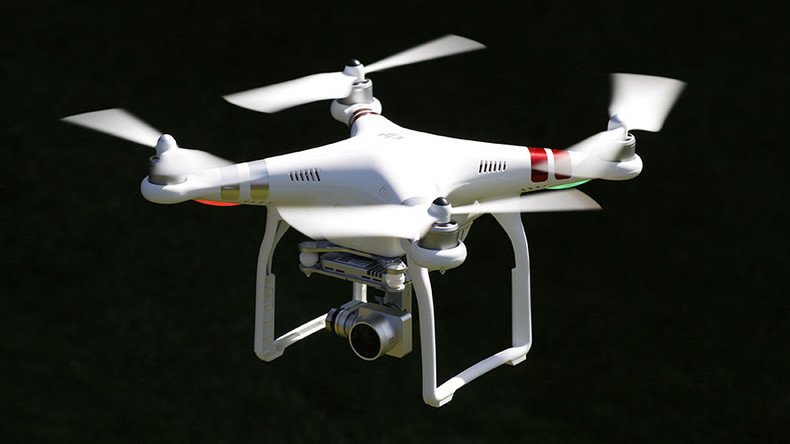
Commercial drones under 55lb (25kg) have been cleared to fly in the US during daylight hours starting in August. An operator should be aged 16 or older and must be certified every two years.
On Tuesday, the US Federal Aviation Administration (FAA) announced the new rules, revealed years after Congress first requested guidelines that would allow small, remote-controlled unmanned aerial systems (UAS), or drones, to conduct routine commercial flights in accordance with public safety and national airspace rules, and without special permission from the federal government.
“With this new rule, we are taking a careful and deliberate approach that balances the need to deploy this new technology with the FAA’s mission to protect public safety,” said FAA Administrator Michael Huerta. “But this is just our first step. We’re already working on additional rules that will expand the range of operations.”
DOT and FAA Finalize Rules for Small Unmanned Aircraft Systems https://t.co/yr1VUrygOf#drones#flysafepic.twitter.com/XaUTA9rhB7
— The FAA (@FAANews) June 21, 2016
The rules, which will go into effect in late August, will not require commercial drone operators to receive a special permit from the FAA, as is the case now. Since 2014, the FAA says it has granted more than 6,000 commercial permits leading up to Tuesday's announcement.
The guidelines, which pertain to drones weighing 55 pounds or less, will demand that operators who are at least 16 years of age register drones with the FAA and pass an aviation knowledge exam with an FAA-approved testing center or already have a proper pilot certificate. Certification will be good for 24 months. Operators must also submit to a security clearance review.
Like operators of hobby drones, commercial drone pilots must keep their UAS within sight. Operators must keep the drones away from airspace where people are directly below, away from the underside of covered structures, and below 400 feet (122 meters) in altitude. Drones must also stay at least 400 feet away from a building or tower.
The rules allow for commercial drones to fly during the daytime or twilight hours (30 minutes before official sunrise or after official sunset), but only if the drone has proper anti-collision lighting. For night-flying privileges, operators must apply for a waiver with the FAA.
Operators must yield right of way to other aircraft and not exceed drone speed above 100mph (160kph).
“We are part of a new era in aviation, and the potential for unmanned aircraft will make it safer and easier to do certain jobs, gather information, and deploy disaster relief,” said US Transportation Secretary Anthony Foxx. “We look forward to working with the aviation community to support innovation, while maintaining our standards as the safest and most complex airspace in the world.”
Supporters of the rules say the guidance will open up American skies for the likes of aerial photographers, farmers checking crops or livestock, researchers and utility inspectors.
"This is a watershed moment in how advanced technology can improve lives," Brendan Schulman, vice-president with the drone company DJI, told the Associated Press.
As of June 8, the FAA had registered more than 460,000 drone operators, many of them so-called hobbyists, to fly one or more drones, the USA Today reported.
Commercial drone operations will create more than 100,000 jobs and $82 billion in economic impact within 10 years, according to FAA, citing "industry estimates."
The guidelines still prohibit drones from carrying packages or other goods across US airspace, as has been the wish of companies such as Amazon and Google.
The final rules on commercial drones have a 60-day comment period while some details of the proposal are ironed out. Furthermore, the federal rules are bound to meet pushback from states that have crafted their own drone laws. About 30 states have drone laws, such as barring drone flight over private property, according to the National Conference of State Legislatures.
Statement from @workerdrones on the FAA small #UAS rule: https://t.co/kW0o11py0N#drones
— Drone Alliance (@WorkerDrones) June 21, 2016
"The department is working cooperatively with industry," Huerta said. "We certainly see the benefit of this. What we need to see is that it can be done safely."
The federal rules do not deal with privacy issues, though the FAA said it "is acting to address privacy considerations."
"The FAA strongly encourages all UAS pilots to check local and state laws before gathering information through remote sensing technology or photography," the FAA said, adding that the agency will provide drone pilots with recommended privacy guidelines during pilot certification.
